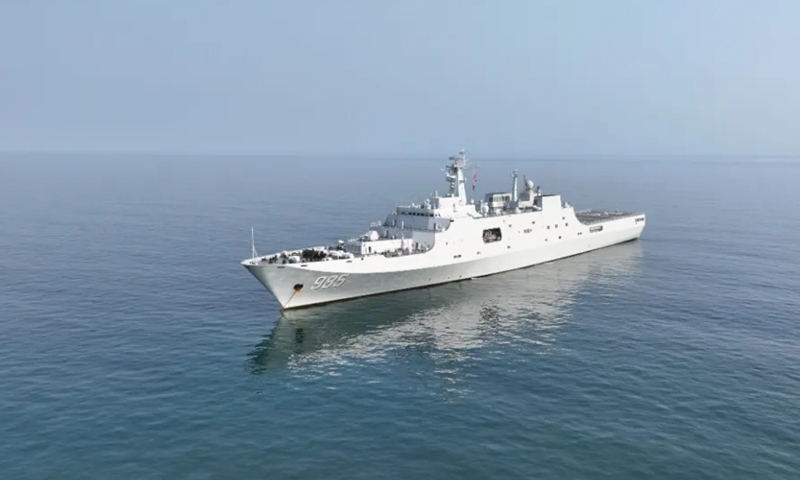
The Qilianshan, a Type 071 comprehensive landing ship of the Chinese People’s Liberation Army (PLA) Navy, arrives in waters off Mozambique on August 2, 2024 ahead of the Peace Unity-2024 joint exercise. Photo: Screenshot from the official WeChat account of the PLA Navy
Chinese and Indian warships both docked in Sri Lanka on Monday, triggering intense concerns among the Indian media, which Chinese experts on Tuesday described as morbid, calling this mentality an extension of the “China threat” theory.
According to Indian media outlet The Financial Express, the Indian Naval Ship (INS)
Mumbai arrived at the port of Colombo for a three-day visit to Sri Lanka on Monday, and this marks the ship’s inaugural port call in the island nation and is the eighth visit by Indian naval ships this year.
During its stay, INS
Mumbai’s crew will host a briefing for Sri Lanka Navy personnel on its operational functions and conduct joint activities such as sports events, yoga sessions, and a beach cleanup, the Financial Express said.
The Indian move demonstrates its emphasis on cooperation with Sri Lanka in the military field, where the development of defense cooperation, including naval interactions, is considered a major way for India to reinforce its influence in the Indian Ocean, Qian Feng, director of the research department at the National Strategy Institute at Tsinghua University, told the Global Times on Tuesday.
At the same time, a Chinese naval fleet, composed of the amphibious dock landing ships
Wuzhishan and
Qilianshan and the guided-missile destroyer
Hefei made a technical visit in Sri Lanka for a three-day resupply on Monday morning after completing a joint exercise with Tanzania and Mozambique, according to a press release by the Chinese People’s Liberation Army Navy on Tuesday.
Several Indian media outlets, including NDTV and The Hindu, have shifted their eyes to the Chinese warships’ presence, saying that “Colombo port welcomes Indian, Chinese warships on the same day.”
“Given the relatively frequent military interactions between India and Sri Lanka, I think that the simultaneous docking of Chinese and Indian warships in Sri Lanka is a coincidence,” Qian said.
However, he noted, that it is evident from the hype in the Indian media that there is always a group in India who are over sensitive to China’s normal exchanges with Sri Lanka, even if it’s just a simple warship stopover.
This argument reflects an unhealthy mindset among some Indians, who consistently view China’s maritime cooperation with Indian Ocean nations as a threat – an extension of the “China threat” theory at its core, Qian noted.




